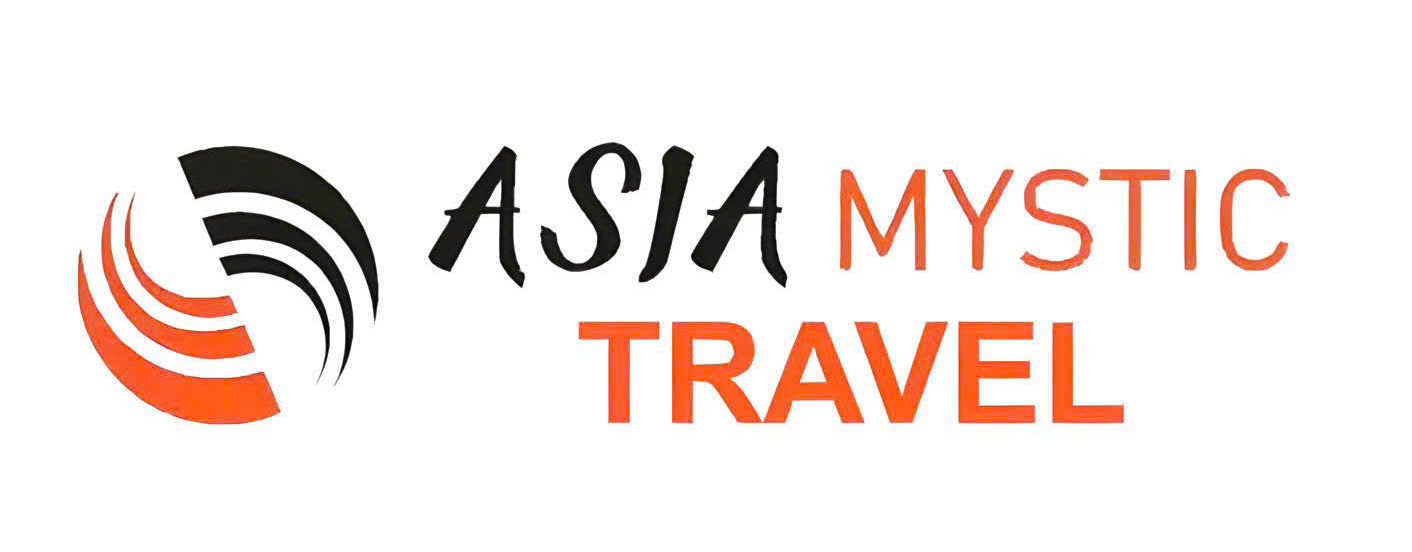
Central Vietnam Itinerary: Hue And Hoi An Journey In 5 Days
Central Vietnam at a Glance
Central Vietnam, often consiđể the cultural heart of the country, stretches between the mountainous north and the tropical south. This region is home to some of Vietnam's most iconic UNESCO World Heritage Sites, dramatic coastlines, flavorful cuisine, and a fascinating blend of ancient and modern life.
Geographically, Central Vietnam includes provinces such as Thừa Thiên Huế, Quảng Nam, Đà Nẵng, and parts of the Central Highlands. It’s compact enough for overland travel yet diverse enough to feel like you're discovering a new side of Vietnam every day.
And Central Vietnam is also where Vietnamese, Cham, and colonial French influences intertwine. You'll find imperial palaces and dragon motifs in Hue, Cham sculptures in Da Nang, and merchant houses in Hoi An - all just a few hours apart.
Add to that the pristine beaches along the East Sea, lush rice paddies, and rich fishing traditions, and you get a region that offers just the right balance of sightseeing, relaxation, and cultural immersion.
>>> If you only have a few days to explore Vietnam, our tour Classic 5-Day Central Vietnam gives you a taste of the country’s history, food, and natural beauty without the long travel distances of a North-to-South tour. You can take it as a reference, since the itinerary is fully customizable.
When Is the Best Time to Visit Central Vietnam?
Understanding the weather is essential for planning the perfect Central Vietnam itinerary. The region experiences a distinct climate pattern that differs from both the north and the south of the country. Here's what you need to know before choosing your travel dates.
Unlike the north, with its four distinct seasons, or the tropical south, with its year-round warmth, Central Vietnam experiences two distinct seasons: the dry season and the rainy season.
Dry season (February to August)
The dry season is widely regarded as the best time to visit Central Vietnam. During these months, you can expect clear blue skies, warm temperatures ranging from 25°C to 35°C (77°F to 95°F), and low humidity, which is perfect for beach days in Da Nang, exploring the imperial relics of Hue, or strolling through Hoi An's lantern-lit streets.
March to May, in particular, strikes a sweet balance between pleasant temperatures and minimal rainfall, making it ideal for sightseeing, photography, and outdoor activities.
Rainy season (September and January)
The rainy season brings frequent showers, high humidity, and the occasional typhoon. October and November are typically the wettest months, during which cities like Hoi An and Hue may experience flooding, affecting accessibility to some heritage sites and outdoor attractions.
However, this season also comes with its advantages, such as fewer tourists, greener landscapes, and lower accommodation prices, which can appeal to off-season travelers who don’t mind a little rain.
January and December often offer drier, cooler days perfect for temple visits and walking tours, especially in Hue. Keep in mind that during the Tet Holiday (usually in late January or early February), many shops and local services may close, so it’s wise to plan accordingly.
In short, the best time to visit Central Vietnam is between February and early September, with March to May offering the most favorable mix of sunshine and comfortable temperatures.
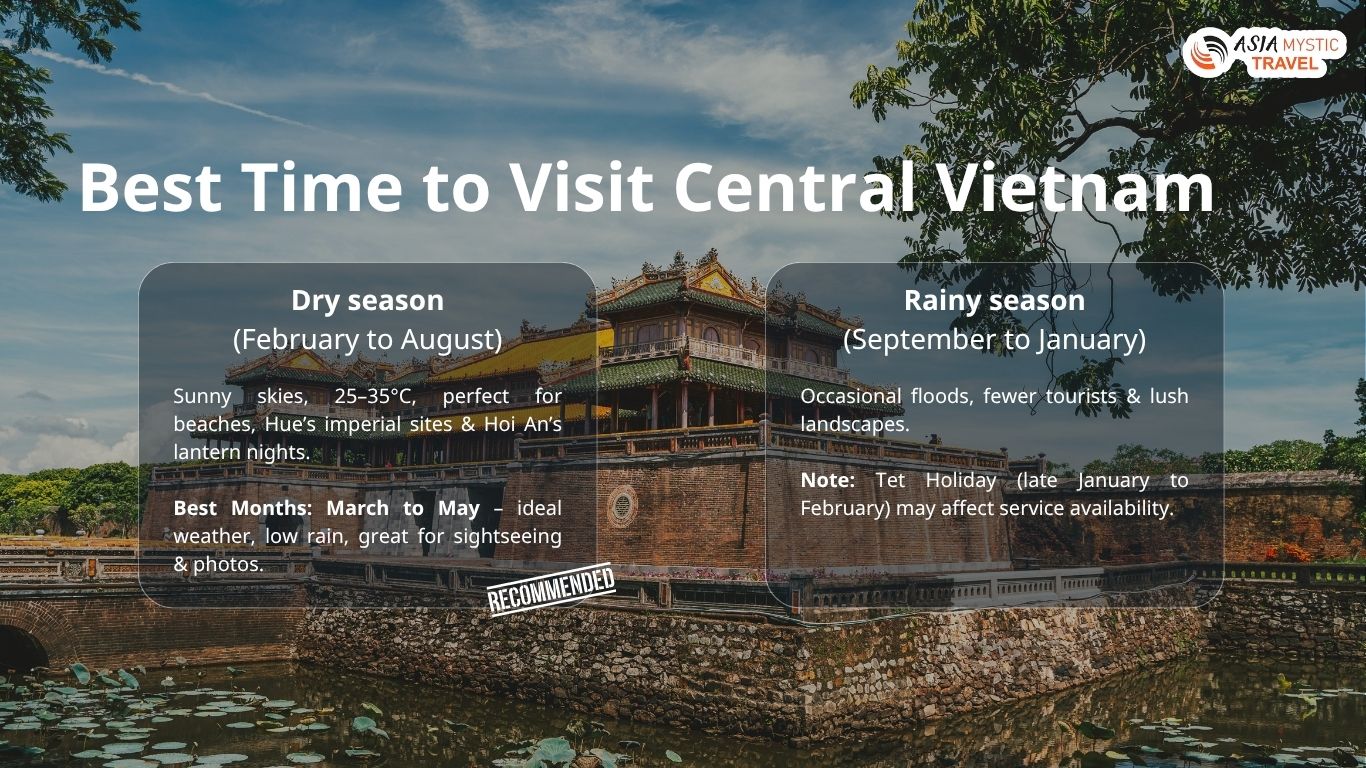
Best Places to Visit in Central Vietnam
Central Vietnam may be smaller in size compared to the north or south. Still, it packs an incredible diversity of landscapes, heritage sites, and experiences within just a few hundred kilometers. Whether you're after royal history, golden beaches, cultural immersion, or culinary adventure, the region has something to offer every traveler.
Quang Binh
Located on the north-central coast, Quang Binh is best known for Phong Nha - Ke Bang National Park, a UNESCO-listed region with the most extraordinary cave systems in the world. Adventurers flock here to see Son Doong Cave, the world’s largest cave, or enjoy accessible experiences like Paradise Cave, Phong Nha Cave, and Dark Cave.
Aside from caving, Quang Binh offers serene countryside, eco-stays, and historical wartime relics. It’s the place to unplug and explore Vietnam’s untamed natural side.
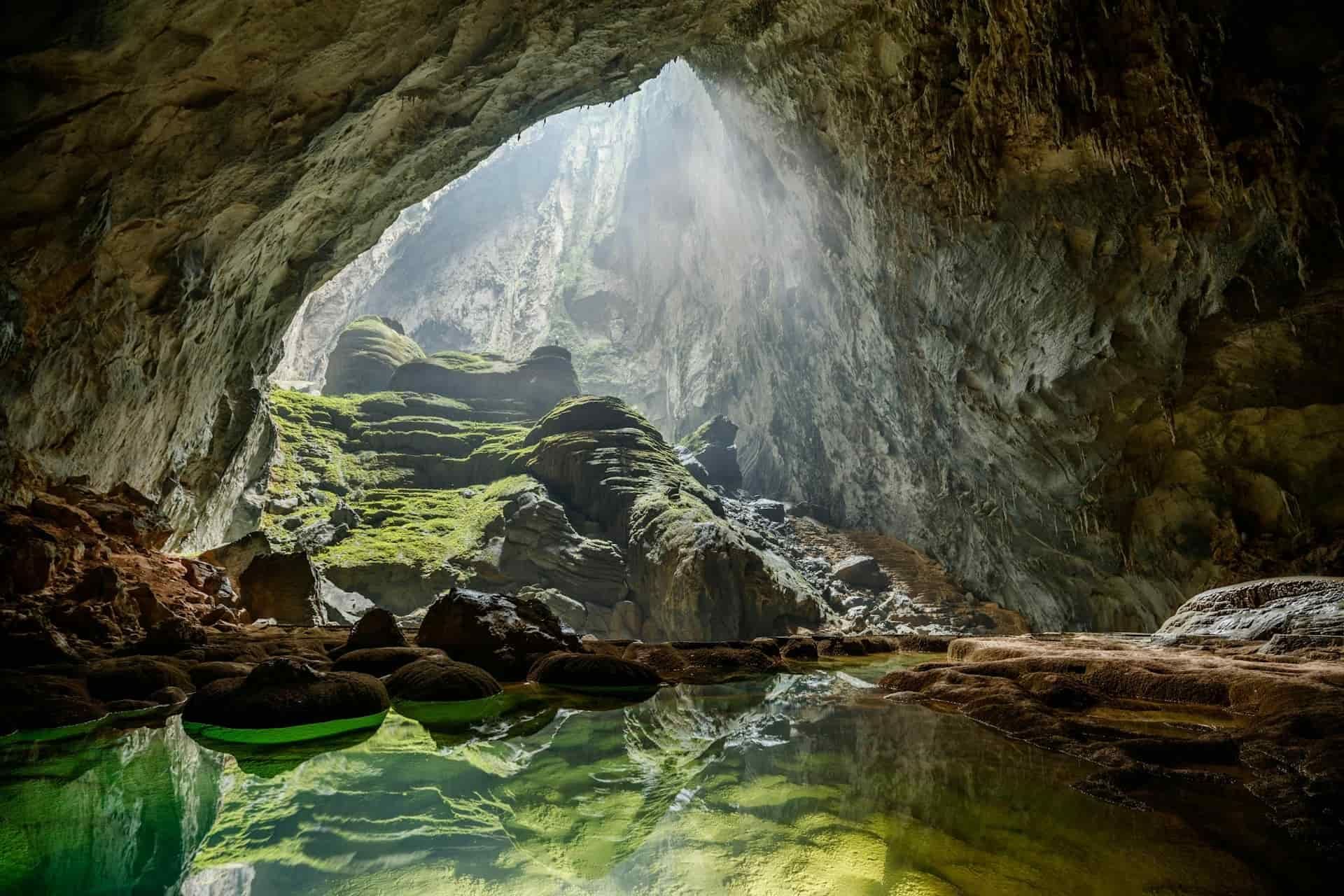
Hue
The journey through Central Vietnam often begins in Hue, a city that once served as the capital of the Nguyen Dynasty. Hue is a treasure trove of imperial history, and nowhere is this more evident than in the majestic Imperial City (Đại Nội), a UNESCO World Heritage Site.
Hue is also home to ornate royal tombs, such as those of Emperor Tu Duc and Khai Dinh, each offering insight into Vietnam's dynastic past and a unique architecture that blends Confucian, Buddhist, and French styles. Along the Perfume River, you’ll find the iconic Thien Mu Pagoda, standing watch over the city for more than 400 years.
For those seeking something more off the beaten path, Thuy Tien Lake - an abandoned water park just outside the city - has become a viral sensation and was even listed among the world’s most unique abandoned places. Overgrown slides, a giant dragon structure, and eerie silence make it a surreal stop for photographers and urban explorers.
Culinary travelers will love Hue’s distinctive cuisine, which includes bold and spicy dishes like bún bò Huế and delicate specialties once reserved for the royal family.
Note: Hue is perfect for history lovers, foodies, and those seeking a quieter, more reflective start to their Central Vietnam trip.
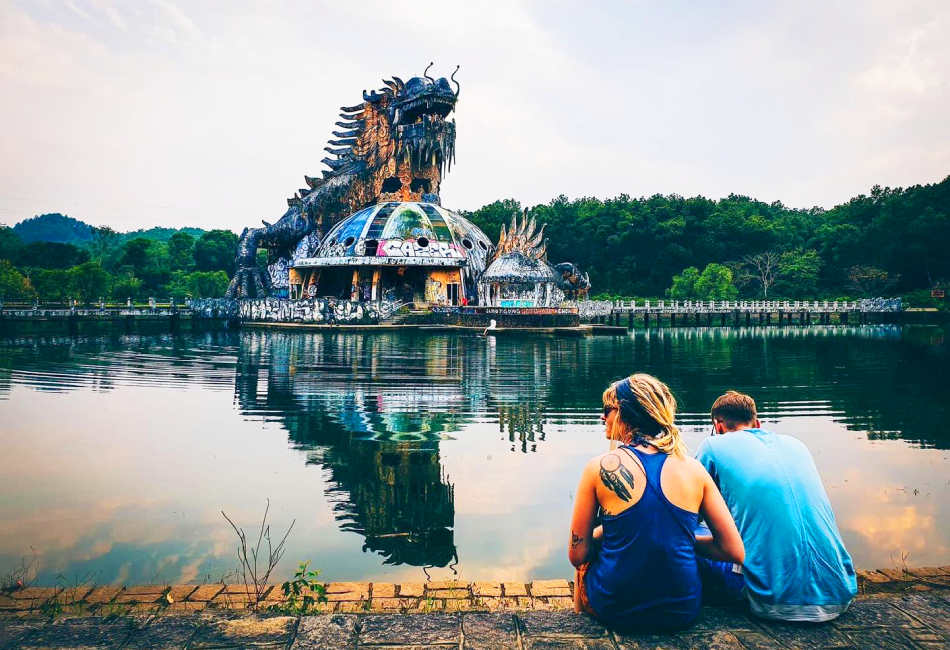
Da Nang
A short but scenic drive from Hue over the Hai Van Pass brings you to Da Nang, a dynamic coastal city that blends urban life with natural beauty.
Here, you can spend the day soaking up the sun at My Khe Beach or exploring the spiritual and natural attractions of the Marble Mountains, where caves and pagodas nestle inside limestone peaks. One of Da Nang’s most famous modern icons is the Golden Bridge at Ba Na Hills, a surreal mountaintop attraction where a pair of giant stone hands cradle a golden pedestrian bridge overlooking the forest.
In the evenings, head to the Dragon Bridge, where fire and water shows light up the weekend skyline, or dine on fresh seafood by the beach.
>>> Discover more stunning coastal escapes with our guide to the Top 7 Beaches in Da Nang.
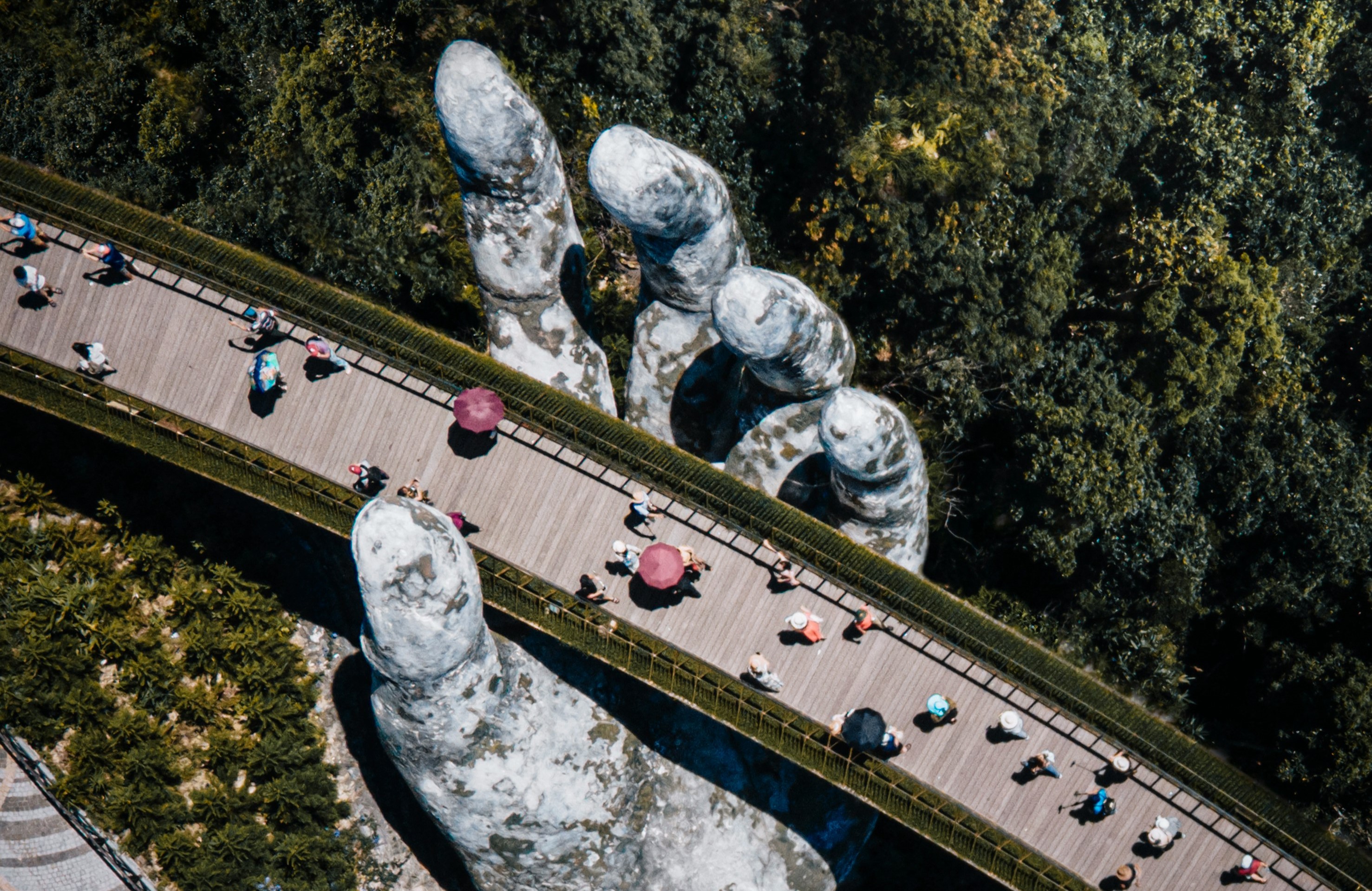
Hoi An
No Central Vietnam itinerary would be complete without a stop in Hoi An, arguably Vietnam’s most atmospheric town. Declared a UNESCO World Heritage Site, Hoi An Ancient Town is a beautifully preserved blend of Chinese shophouses, Japanese bridges, and French colonial buildings, all wrapped in a dreamy palette of mustard yellow and soft lantern light.
During the day, explore historic temples, sip coffee by the riverside, or get measured for custom-tailored clothing at one of Hoi An’s many tailor shops.
For a taste of rural life, don’t miss a basket boat ride through the water coconut groves in Cam Thanh Village.
![]()
Buon Ma Thuot
Nestled deep in the Central Highlands, Buon Ma Thuot is an off-the-beaten-path city rich in ethnic culture and coffee heritage. It’s home to sprawling coffee plantations, traditional Ede villages, and the World Coffee Museum, where visitors can sip and learn about the global coffee trade.
Beyond coffee, waterfalls like Dray Nur and Dray Sap, and nearby Yok Don National Park offer nature and adventure. A visit here adds both cultural depth and unique flavors to your Central Vietnam itinerary.
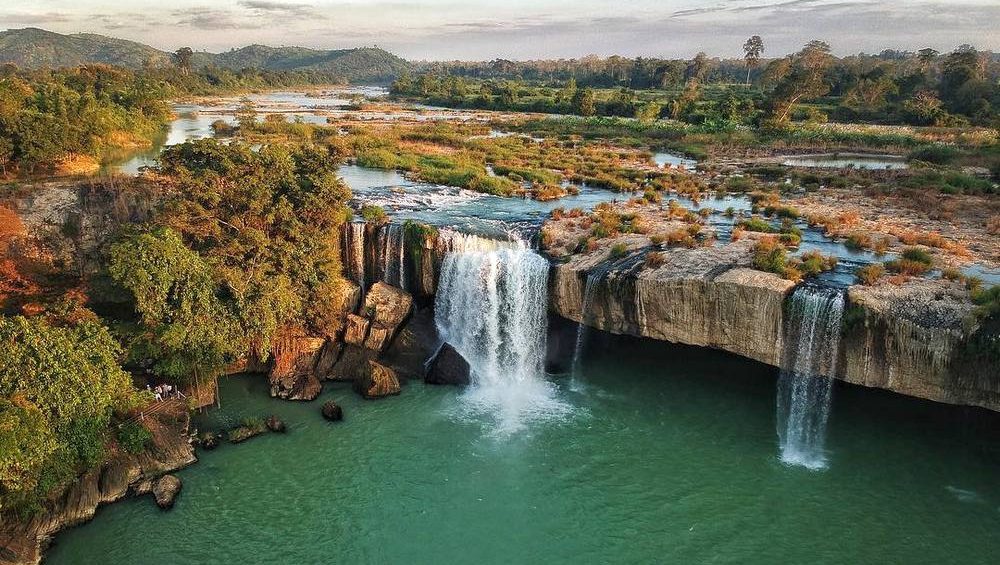
Tay Nguyen
If you want to experience Vietnam beyond beaches and cities, the Central Highlands, encompassing provinces like Dak Lak, Gia Lai, and Kon Tum, offer a raw and authentic vibe.
Think misty pine forests, elephant sanctuaries, wooden stilt houses, and gongs echoing through the mountains. Trekking, visiting minority villages, and witnessing traditional festivals like Gong Culture Space (UNESCO-listed) immerse you in Vietnam’s highland soul. The region is ideal for slow travelers seeking culture and nature.

Phu Yen
Often overlooked by mainstream tourism, Phu Yen delivers some of the most underrated coastal scenery in Vietnam. From the dramatic cliffs of Ganh Da Dia (the "rock plates") to the peaceful Bai Xep beach, the province remains blissfully quiet.
Its raw beauty and cinematic landscapes (seen in the film Yellow Flowers on the Green Grass) make it ideal for road-trippers and photographers. Seafood here is fresh and cheap, and the vibe is relaxed, a wonderful detour between Quy Nhon and Nha Trang.
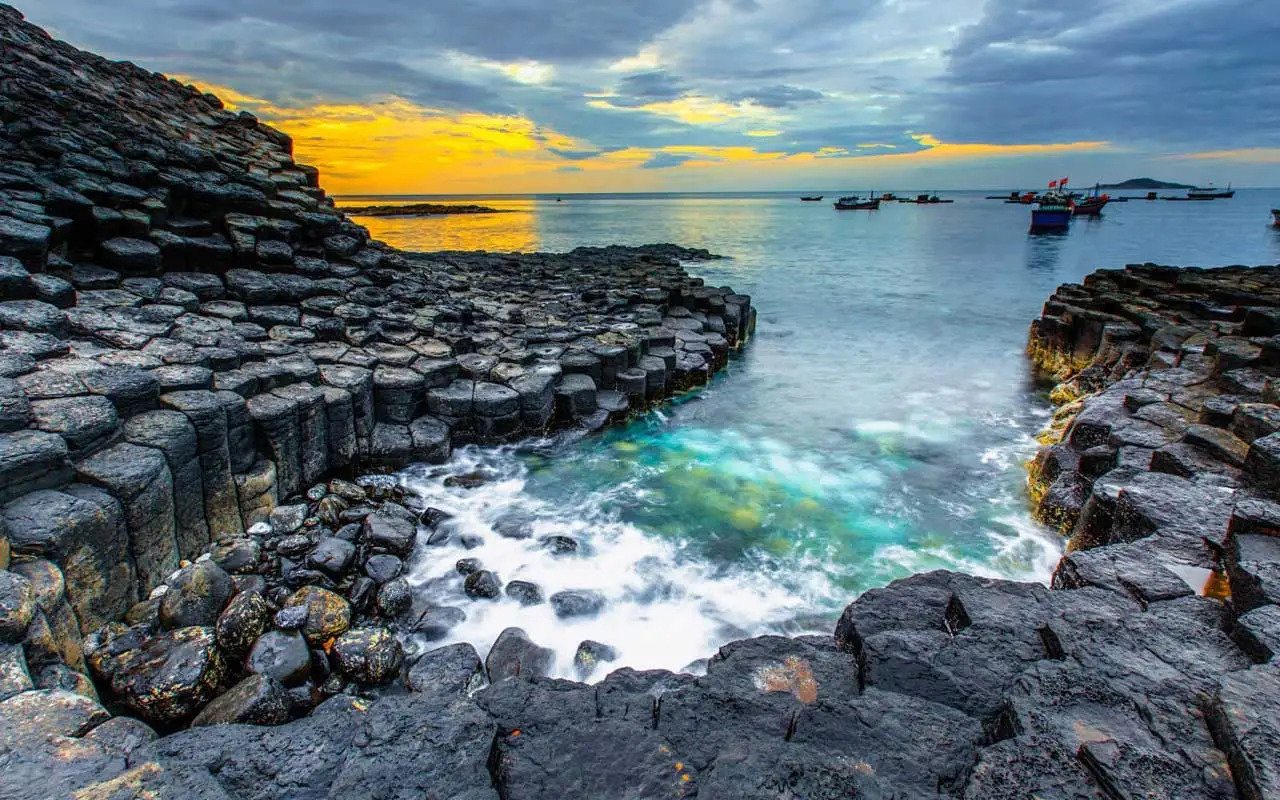
Nha Trang
While technically leaning toward the South Central Coast, Nha Trang often makes its way into Central Vietnam itineraries thanks to its glorious coastline, island-hopping tours, and vibrant resort scene.
Travelers can enjoy scuba diving, mud baths, and panoramic views from the Vinpearl Cable Car to Hon Tre Island. The city also boasts Cham Towers, bustling seafood markets, and a nightlife that surprises many. For a classic beach break with a blend of activity and leisure, Nha Trang checks all the boxes.
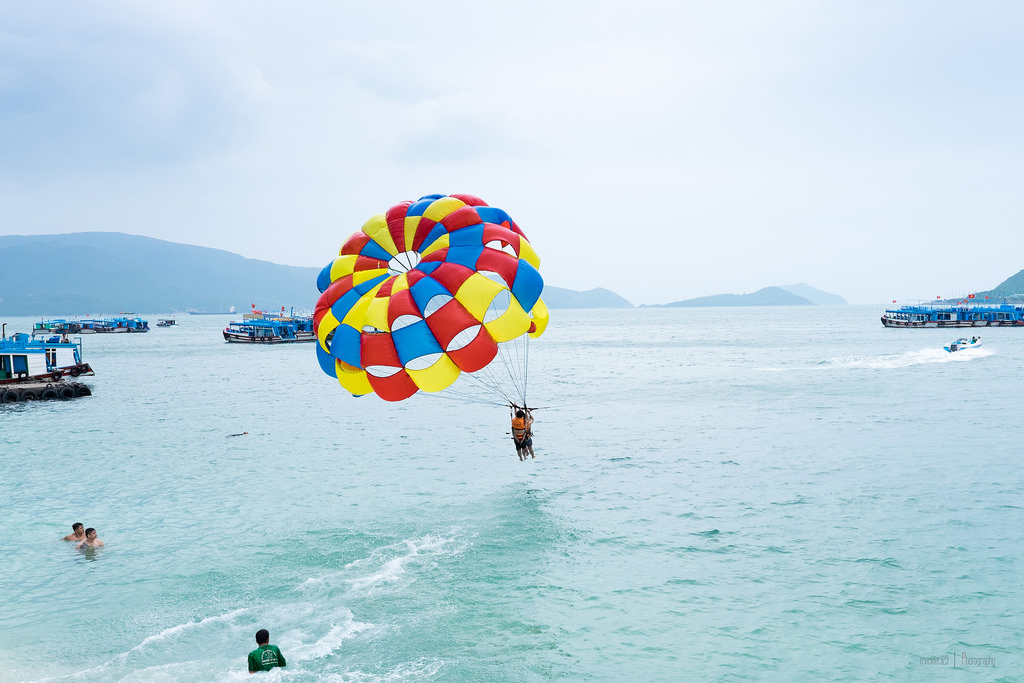
Suggested 5-Day Central Vietnam Itinerary
From imperial heritage to atmospheric lantern-lit streets, Central Vietnam packs history, culture, and scenery into one compact region. Here's a perfect 5-day journey exploring Hue and Hoi An, tailored for culture lovers and leisure seekers alike.
Day 1: Arrival in Hue
Touch down in Hue, the former imperial capital, where tradition lingers in the air. Your private transfer awaits to take you to your hotel for check-in (from 2:00 PM).
Arriving early? Drop your bags, freshen up, and begin your introduction to Hue with a relaxed walk along the Perfume River or a taste of local specialties like bánh bèo or bún bò Huế. The rest of the day is yours. Whether you unwind or wander, let Hue's quiet elegance ease you into Central Vietnam.
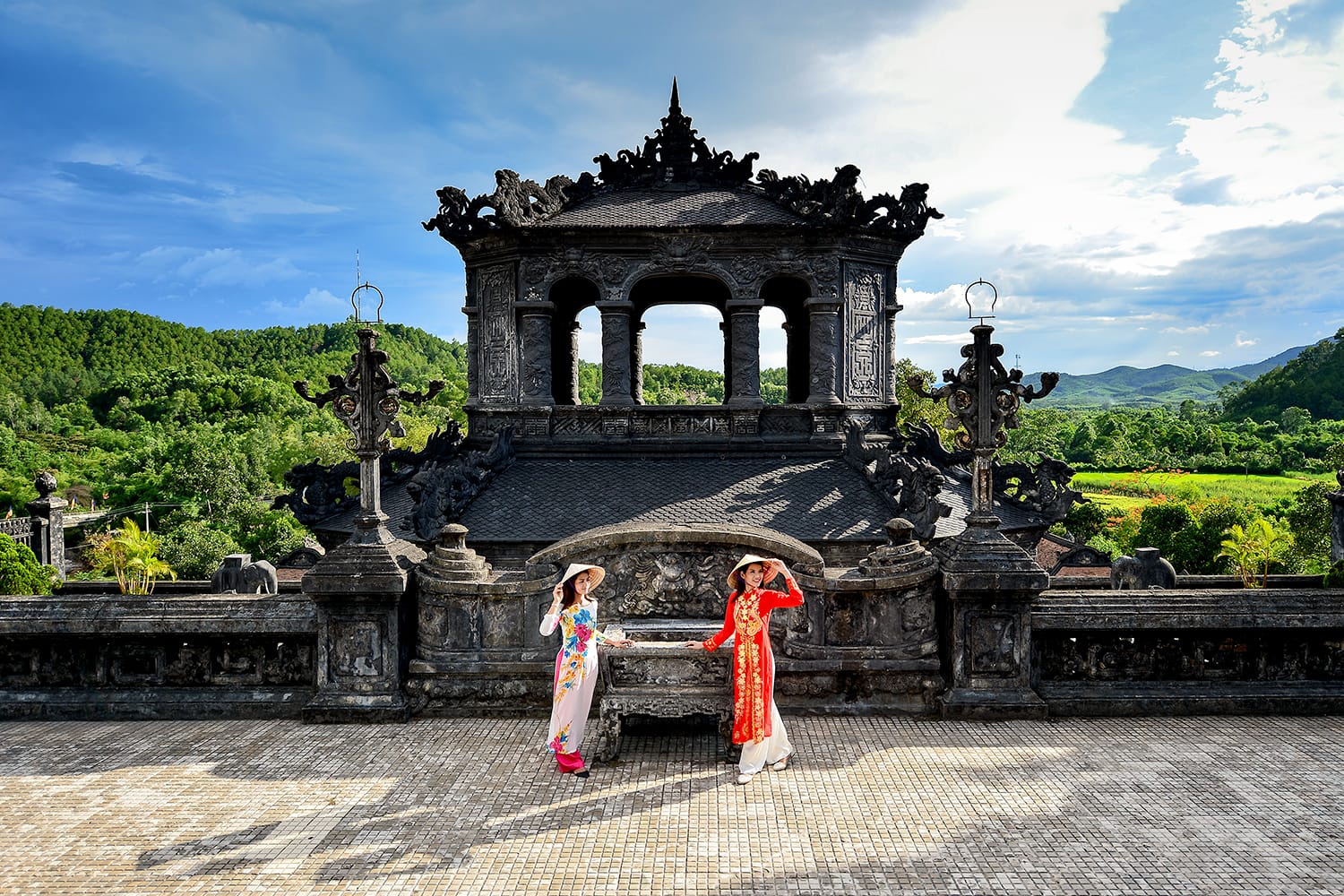
Day 2: Full day in Hue
Start your day with a journey into Vietnam’s royal past. After breakfast, dive into Hue’s historic heart with a guided visit to the Imperial City (Đại Nội), a UNESCO-listed complex of palaces, temples, and citadels that once housed the Nguyen emperors.
Next, embark on a scenic cruise along the Perfume River aboard a traditional dragon boat. Along the way, you’ll stop at the iconic Thien Mu Pagoda, Hue’s oldest and most sacred Buddhist temple.
In the afternoon, continue your cultural journey with a visit to the Tomb of Emperor Tu Duc, an elegant complex blending royal architecture with serene natural surroundings. This poetic site reflects the emperor’s philosophical outlook and his desire for a harmonious afterlife.
End the day at Dong Ba Market, Hue’s bustling central bazaar. Wandering through colorful stalls filled with local produce, handicrafts, and street snacks is an ideal place to connect with daily life and perhaps pick up a few unique souvenirs.

Day 3: Hue to Hoi An
After breakfast, bid farewell to Hue as you board the heritage railway route from Hue to Da Nang - one of the most breathtaking train rides in Southeast Asia. As the train winds along the coastline, you’ll be treated to the lush mountains of Hai Van Pass.
Upon arrival in Da Nang, your driver will greet you at the station and transfer you to Hoi An. After checking in at your hotel, spend the afternoon strolling through Hoi An Ancient Town.
Visit highlights such as the Japanese Covered Bridge, the Assembly Hall of the Fujian Chinese Congregation, and traditional merchant houses. Along the way, you'll discover tailor shops, art galleries, and cozy cafés set in heritage buildings. Enjoy a dinner at a local restaurant, where you can try Hoi An specialties like cao lầu, white rose dumplings, or banh vac.
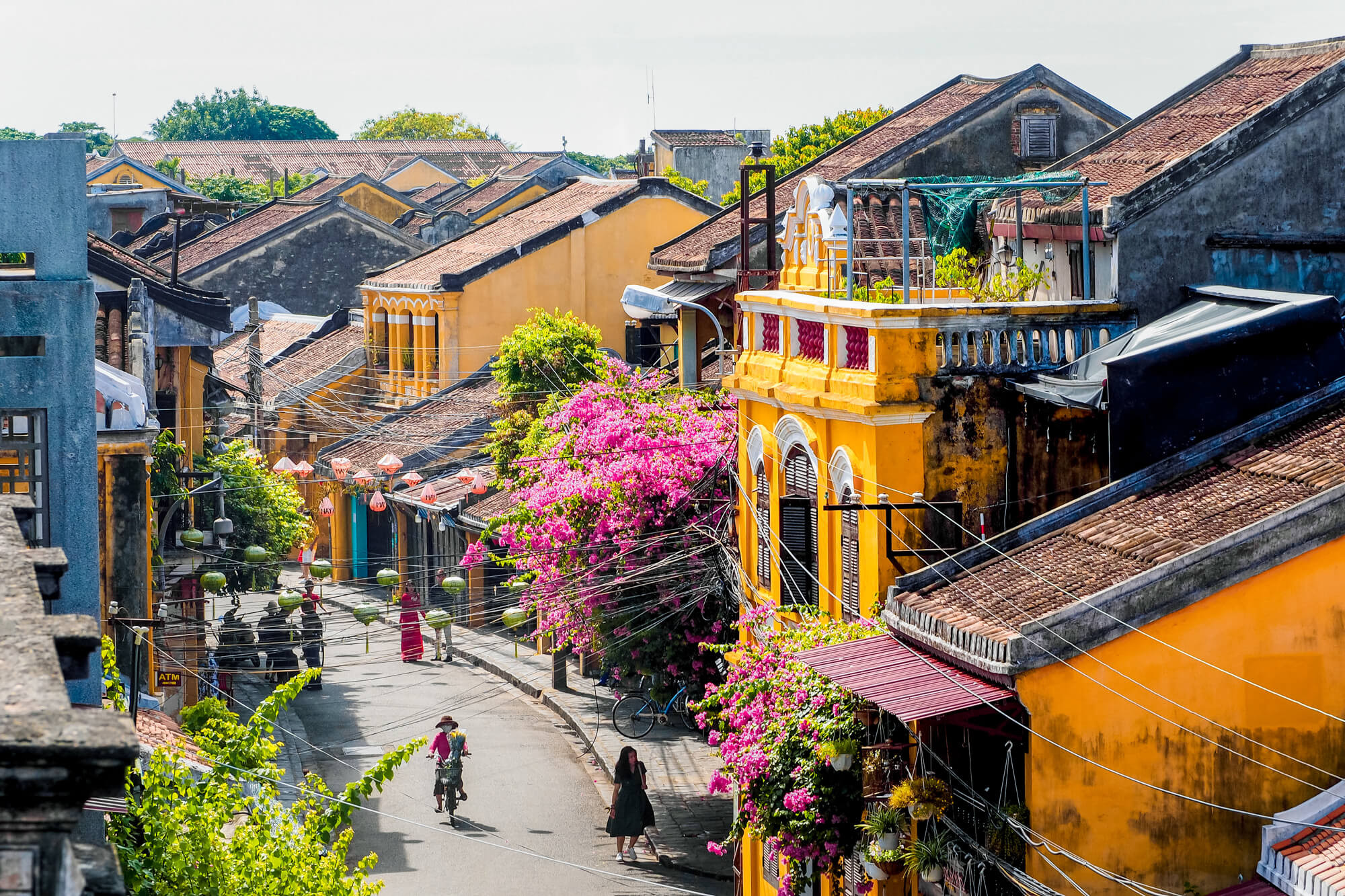
Day 4: My Son Holyland
After a leisurely breakfast, embark on a half-day guided excursion to My Son Sanctuary, the spiritual heart of the ancient Champa Kingdom. Nestled in a lush valley surrounded by jungle-covered mountains, this UNESCO World Heritage Site is home to a collection of red brick temples dating from the 4th to 13th centuries. With the insights of your local guide, uncover the deep spiritual symbolism and rich architectural legacy that once made My Son a major religious center in Southeast Asia.
Return to Hoi An by midday and enjoy lunch at a local restaurant or café in the Old Town. The afternoon is yours to relax or explore at your own pace. You can consider:
- Browsing tailor shops and local boutiques for custom clothing.
- Enjoying a peaceful bike ride through Tra Que vegetable village.
- Taking a lantern-making workshop.
In the evening, let Hoi An’s lantern-lit magic enchant you again. Dine riverside or try out local street food delights such as banh mi, quang noodles, or a fresh passionfruit juice.
>>> Want to dive deeper into the history and visiting tips? Read more about My Son Holyland.
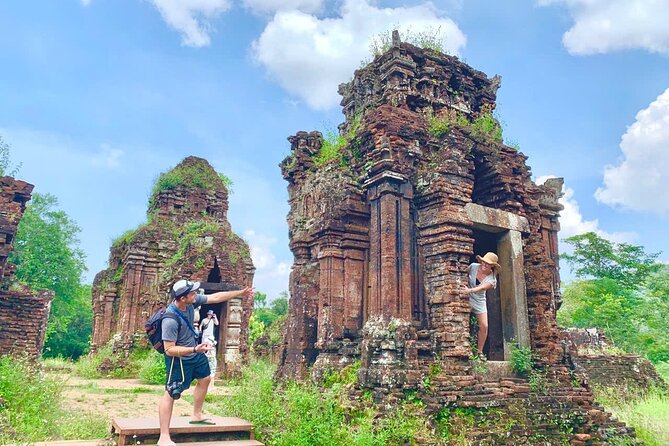
Day 5: Departure
Enjoy a leisurely breakfast at your hotel, then take advantage of your final morning in Hoi An. It’s the perfect time to wander the ancient streets and pick up meaningful souvenirs.
At the appointed time, our driver will transfer you to the airport for your departure flight.
We wish you safe travels and hope your journey through Central Vietnam leaves lasting memories. See you soon!
FAQs
Q: When is the best time to visit Central Vietnam?
A: The ideal time to visit Central Vietnam is from February to August, when the weather is mostly sunny, dry, and perfect for exploring Hue, Hoi An, and My Son. Avoid the rainy season (September to November) if you prefer outdoor activities.
Q: Is 5 days enough for Central Vietnam?
A: Yes, 5 days is enough to cover the main highlights of Central Vietnam, such as the Imperial City of Hue, Hoi An Ancient Town, My Son Sanctuary, and the scenic Hai Van Pass. If you want a relaxed pace or beach time, consider extending to 7 days.
Q: How do I travel from Hue to Hoi An?
A: The most scenic option is by train to Da Nang, offering coastal views over Hai Van Pass, then a car transfer to Hoi An (about 45 minutes). You can also take a direct car ride (~3.5 hours).
Q: Is a guide included in this itinerary?
A: Yes, the itinerary includes a professional English-speaking local guide for Hue, Hoi An, and My Son to ensure cultural insights and smooth logistics.
This 5-day Central Vietnam itinerary offers the perfect blend of imperial history, scenic beauty, and cultural charm. From Hue’s ancient citadel to Hoi An’s lantern-lit nights and the sacred My Son Sanctuary, each day brings a new adventure. We’re happy to adjust the itinerary to match your travel style. Just drop us a line at info@asiamystictravel.com or message us via WhatsApp.
Quick Contact
What do customers say about us?
Join us to experience a trip that will make you remember forever
